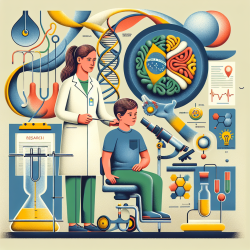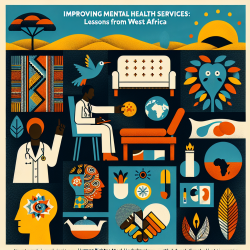Introduction
As a speech-language pathologist, understanding the broader health context of the children you work with is crucial. Recent research highlights the importance of physical activity in improving health-related quality of life, particularly for individuals with neurologically-related mobility disabilities. This is especially pertinent during challenging times such as the COVID-19 pandemic.
Research Insights
The study titled Physical Activity and Health-Related Quality of Life in Adults With a Neurologically-Related Mobility Disability During the COVID-19 Pandemic: An Exploratory Analysis explores the relationship between physical activity and health-related quality of life among individuals with neurological conditions. The findings are significant: 69% of participants reported reduced physical activity during the pandemic, which correlated with higher levels of depression and fatigue, and lower vitality.
Implications for Practice
For practitioners, these findings underscore the importance of encouraging physical activity as part of a holistic approach to therapy. Here are some practical steps you can take:
- Promote Active Play: Encourage children to engage in play that involves movement, such as dancing, jumping, or simple exercises.
- Incorporate Movement in Therapy: Use activities that require movement, such as obstacle courses or interactive games, to make sessions more dynamic and engaging.
- Educate Families: Provide resources and guidance to families on the importance of physical activity and ways to incorporate it into daily routines.
Encouraging Further Research
While the study provides valuable insights, it also highlights the need for further research, particularly in pediatric populations. Understanding how physical activity impacts children with neurological conditions can help tailor interventions that improve outcomes. Practitioners are encouraged to stay informed about ongoing research and consider participating in studies that explore these dynamics.
Conclusion
Physical activity plays a crucial role in enhancing the quality of life for individuals with neurological conditions. As practitioners, integrating movement into therapy and advocating for active lifestyles can significantly benefit the children we serve. For a deeper dive into the research, you can read the original paper here.










